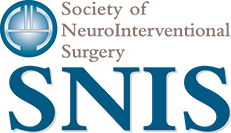Stroke is a leading cause of death and long-term disability in the U.S. Nearly 800,000 people in the U.S. have a stroke every year, taking the lives of about 140,000 annually.
There are two kinds of stroke: ischemic (clot) and hemorrhagic (bleeding).
The vast majority of strokes — 87 percent — are ischemic strokes. Of patients with ischemic strokes, about half experience a severe stroke known as emergent large vessel occlusion (ELVO). This means that a clot is blocking a large vessel and cutting off significant blood flow to the brain. ELVO stroke is the deadliest type and is responsible for the greatest proportion of patients with long-term disability.
Neuroendovascular stroke surgery, or thrombectomy, is a minimally invasive procedure that re-establishes blood flow to the brain quickly and improves the chances that a patient will not only survive a stroke, but will make a full recovery.

